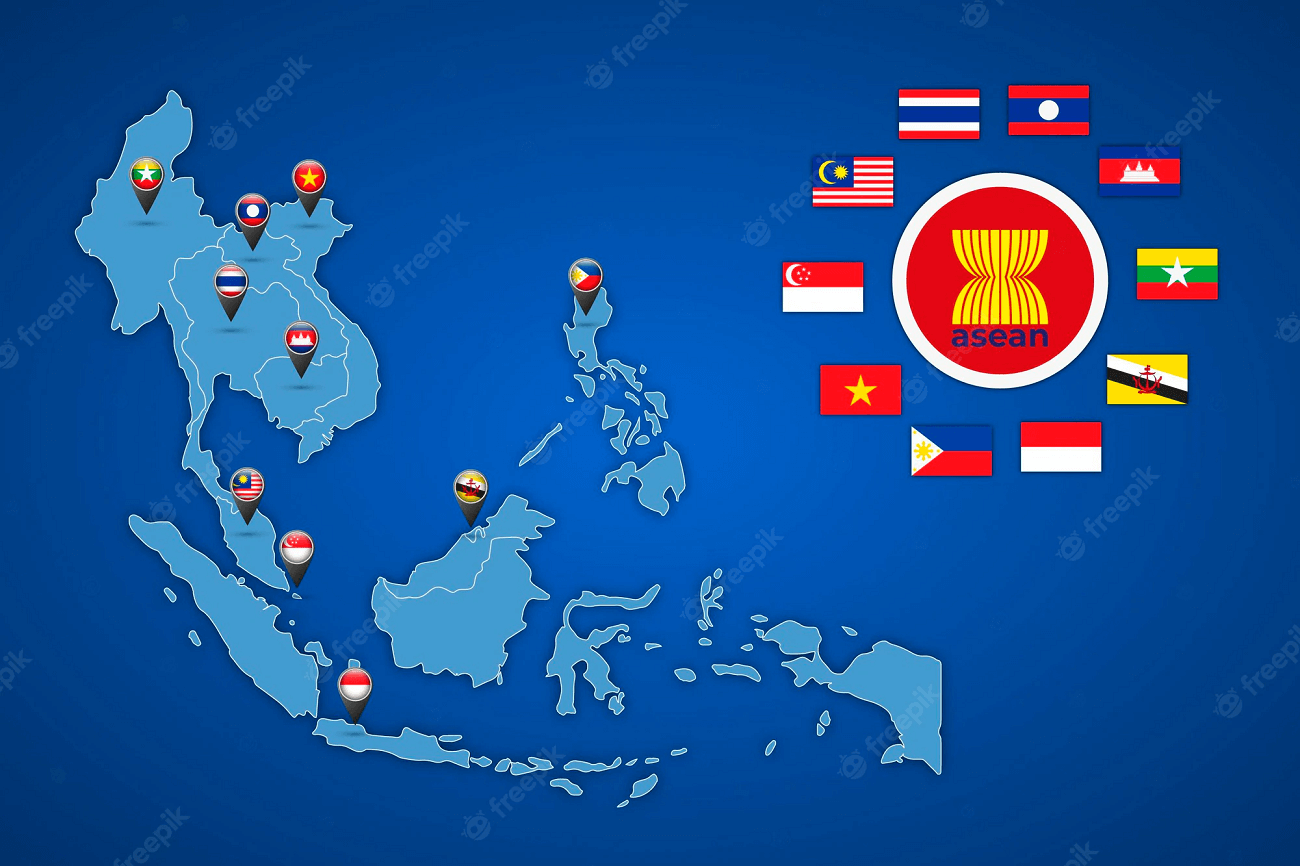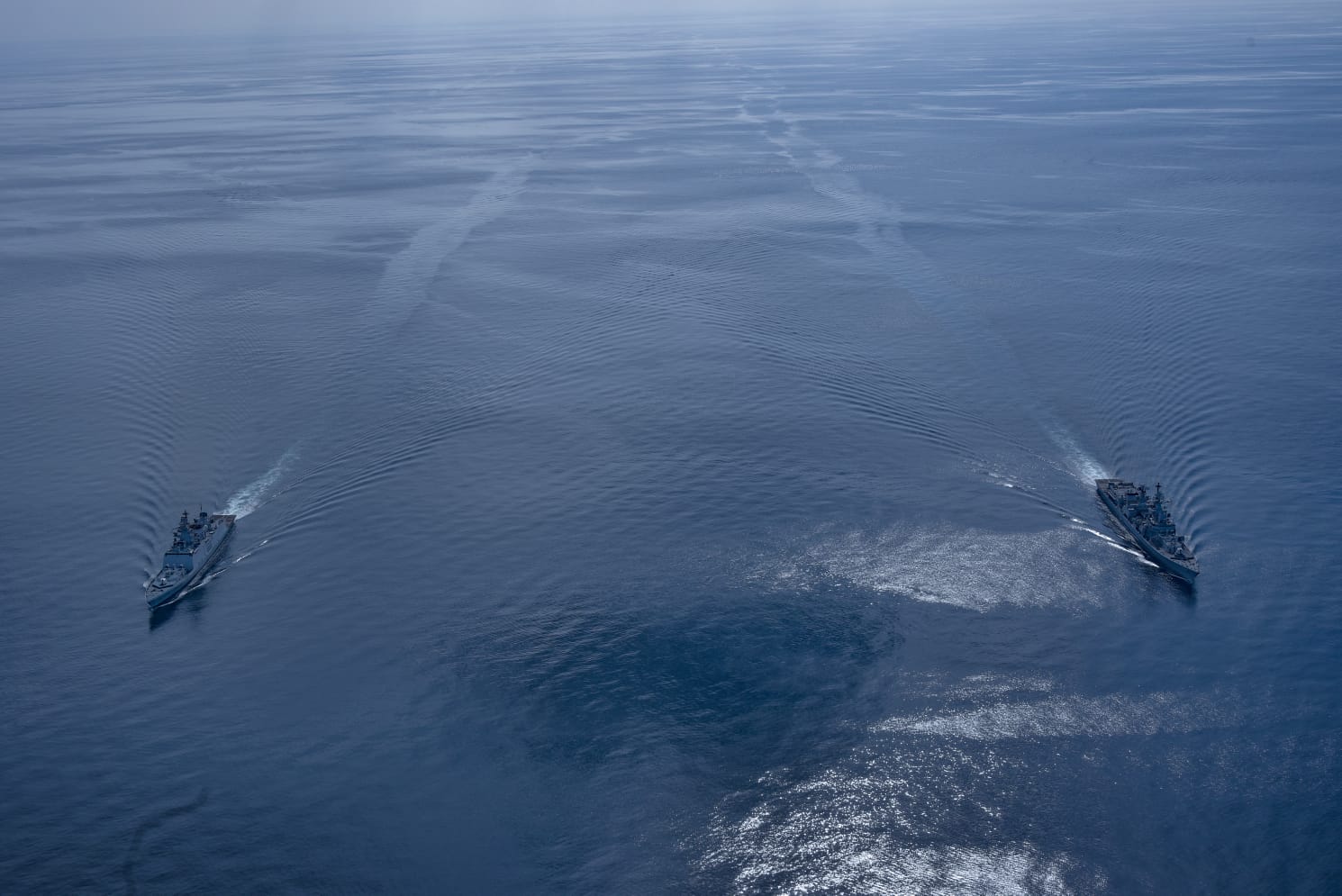OPED by Amb. Gurjit Singh
The strengthening of the India-ASEAN strategic pillar of cooperation is becoming more evident now. Between May 2 and 8, the first-ever ASEAN-India maritime exercise (AIME-2023) will be held.
An Indian Ministry of Defense (MoD) release on May 1 said that it aims to enhance interoperability and exchange best practices among participating navies.
The AIME is held in Singapore and is a dual-phased exercise.
The harbor phase will be held on May 2 and 3, and the sea phase in the South China Sea from May 6 to 8. Indian naval ships Satpura and Delhi are participating in AIME-2023 using Singapore as their base.
What is interesting is that INS Satpura is an indigenously produced guided-missile stealth frigate. INS Delhi is India’s first indigenously built guided missile destroyer. Both ships are part of India’s eastern naval fleet based in Vishakhapatnam. These ships are fitted with state-of-the-art weapons and sensors.
The ships will also participate in the International Maritime Defense Exhibition (IMDEX-23) and International Maritime Security Conference (IMSC) hosted by Singapore.
Besides exercising with the ASEAN navies, both ships are an exhibition of India’s indigenous naval capacities and will manifest India’s domestic capabilities for shipbuilding. ASEAN is increasing its defense acquisitions from middle powers to avoid big power rivalry.
ASEAN Nations Trust India More
ASEAN works in graduated responses to its partners. Its dealings with India on the strategic dimension have been slow but have picked up speed. ASEAN was apprehensive about its relationship with China, particularly in the South China Sea. There has been little progress on the code of conduct under negotiation since 2002.
`Indian Naval Ships Satpura and INS Delhi arrives at Singapore to participate in inaugural #ASEAN India Maritime Exercise (AIME-2023) scheduled from tomorrow.#IndianNavypic.twitter.com/sCsZYOhrXa
— All India Radio News (@airnewsalerts) May 1, 2023
China consolidated its hold over its claims under the nine-dash line over islands and waters of ASEAN countries. In the face of this, India-ASEAN maritime cooperation was really a function of how much anxiety ASEAN would bear from China.
By 2018, their apprehension of dealing with India based on what China would think was overcome. At the 25th anniversary Commemorative Summit in 2018, when all ASEAN leaders were Chief Guests at the Indian Republic Day celebrations, India and ASEAN, for the first time, jointly focused on maritime security in the retreat held then.
Later the same year, Prime Minister Narendra Modi announced India’s Indo-Pacific policy at the Shangri La Dialogue.
Subsequently, in 2019, ASEAN announced its outlook on the Indo-Pacific, and in the same year, India announced the Indo-Pacific Oceans Initiative (IPOI). ASEAN signed a joint statement on cooperation with India in 2021. Para 4.21 of that joint statement refers to “maritime security, efforts to counter piracy and armed robbery against ships, maritime safety and search and rescue (SAR) operations.”
At the 30th anniversary celebrations, a special commemorative Foreign Ministers meeting was held in June 2022. It was announced that, for the first time, an informal India-ASEAN Defense Ministers Meeting would be held.
This defense ministers meeting was duly held in November 2022 in Cambodia on the sidelines of the ASEAN Defense Ministers Plus Meeting; the next step was to have the first-ever India ASEAN maritime exercise. India is the fourth dialogue partner of ASEAN, with whom this exercise is being held after China, the US, and Russia.
At the India-ASEAN Defense Ministers meeting, Indian defense minister Rajnath Singh emphasized India’s consistent advocacy for a free, open, inclusive, and rules-based Indo-Pacific while proposing the benefits if India and ASEAN worked together for maritime security in the region.
He expressed satisfaction with ASEAN’s support for the first India-ASEAN maritime exercise. The forum recognized the importance of the India-ASEAN partnership for ensuring peace and stability in the region.

AIME-2023 More About Relative Comfort
What does this exercise show? For one, it is the best attended among all four exercises that ASEAN has held with its dialogue partners. All ten ASEAN countries are participating, eight with naval assets and Cambodia and Laos with delegations, not naval ships.
Indonesia is represented by KRI Gusti Ngurah Rai, KRI Doctor Radjiman Wedyodiningrat, and KRI Halasan; Singapore by RSS Supreme and their naval force’s Information Fusion Centre; Brunei by KDB Darulehsan; Malaysia by KD Lekiu and a Super Lynx combat helicopter; Philipines by BRP Jose Rizal and AW109 helicopter; Thailand by HTMS Pattani; and Vietnam by a Frigate.
From India, apart from the two warships, a P8I Poseidon surveillance aircraft and a Chetak helicopter are joining the joint exercise. In no other multilateral exercise has such fulsome participation by ASEAN nations’ warships and naval assets occurred.

India has coordinated patrols or exercises with several ASEAN countries bilaterally. India also has a trilateral exercise with Thailand and Singapore. However, AIME is bringing forth India as an important partner of ASEAN. This comes soon after India and ASEAN agreed to upgrade the relationship to a comprehensive strategic partnership at the India-ASEAN summit in November 2022.
Therefore, the bilateral engagements that several ASEAN countries have with India have translated to a confident step forward to work with India on an ASEAN-wide basis. India’s role in the region has been well recognized, particularly in dealing with HADR during tsunamis, volcanic eruptions, etc.
It has become almost routine for the Indian Navy, which is always on call in the region, to be among the first responders. India’s cooperation with ASEAN countries to deal with non-traditional threats, which are now dominating the narrative like drug running, illegal migration, terrorism, and illegal fishing, are valued.
Initially, ASEAN engaged with the big powers for the exercises, starting with China in October 2018, the US in September 2019, and Russia in December 2021. On those occasions, elements from eight ASEAN countries usually participated, which were held in Singapore, Thailand, and Indonesia, respectively.
The exercises are not exactly comparable to 2023, when the world is different. ASEAN and India worry about big power rivalry. That threatens their development and autonomy. Therefore, the logic of doing more together is now evident as India and ASEAN begin to have this exercise.
The impact and manifestation of AIME are much more than what a simple exercise among ships can actually do. This familiarity that India and several ASEAN countries already have is now being translated to the regional level.
This bodes well so that the disturbed conditions in the South China Sea and the growing contention in the wider Indo-Pacific can be jointly perceived by India and ASEAN through such cooperative methods.
- Gurjit Singh is a former Ambassador to Germany, Indonesia, Ethiopia, ASEAN, and the African Union Chair, CII Task Force on Trilateral Cooperation in Africa, Professor, IIT Indore.
- Contact EurAsian Times at etdesk@eurasiantimes.com
- Follow EurAsian Times on Google News




